2-in-1 laptops are awesome devices for business or creative professionals because they’re portable and versatile. These devices either have detachable keyboards or a 360-degree hinge, allowing you to swing the screen all the way around, to use in tablet or tent mode. Some of them even feature touchscreens, which is perfect for doodling or marking up documents. If you’re not sure where to begin your search, don’t worry about it. We’re here to help. The team at PCWorld assembled a list of the best 2-in-1 laptops available today. Not only are these picks great for professionals and students, but we also have hands-on experience with each one. Read on to learn more.
[Looking for something else? Check out our roundup of he best laptops for video editing]
Lenovo Slim 7 Pro X – Best overall
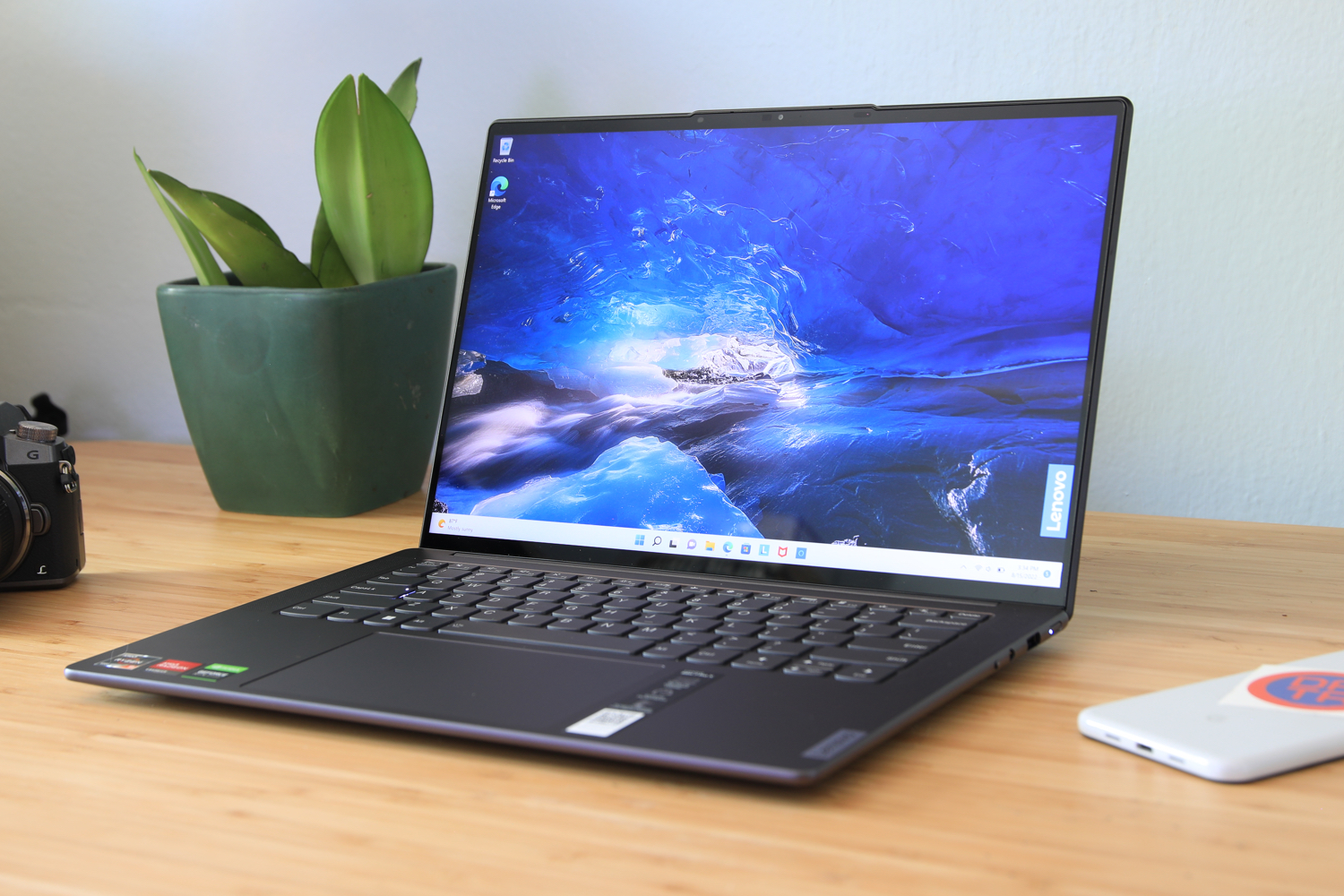
Pros
- Attractive, robust design
- Thin profile, low weight
- Enjoyable keyboard and touchpad
- Excellent processor performance
Cons
- No Thunderbolt 4, Ethernet, or dedicated video-out
- Display is sharp, but falls behind OLED alternatives
- Battery life is slightly behind the pack
MSRP:
$1,399 (baseline) | $1,765 (as reviewed)
With its lightweight form factor, comfortable keyboard, and strong performance, we feel the Lenovo Slim 7 Pro is a fantastic option for most people. It features an AMD Ryzen 6900HS CPU, an Nvidia GeForce RTX 3050 with 55 watt TDP GPU, 32GB of RAM, and 1TB of SSD storage. It weighs a little over three pounds, which is impressive for a laptop with a discrete graphics card. This laptop can handle productivity tasks as well as some gaming. The keyboard is also spacious and the keys themselves are full-sized. Overall, this is a solid choice, as it tics off a lot of boxes.
Read our full
Lenovo Slim 7 Pro Xreview
Acer Chromebook Spin 713 – Best budget
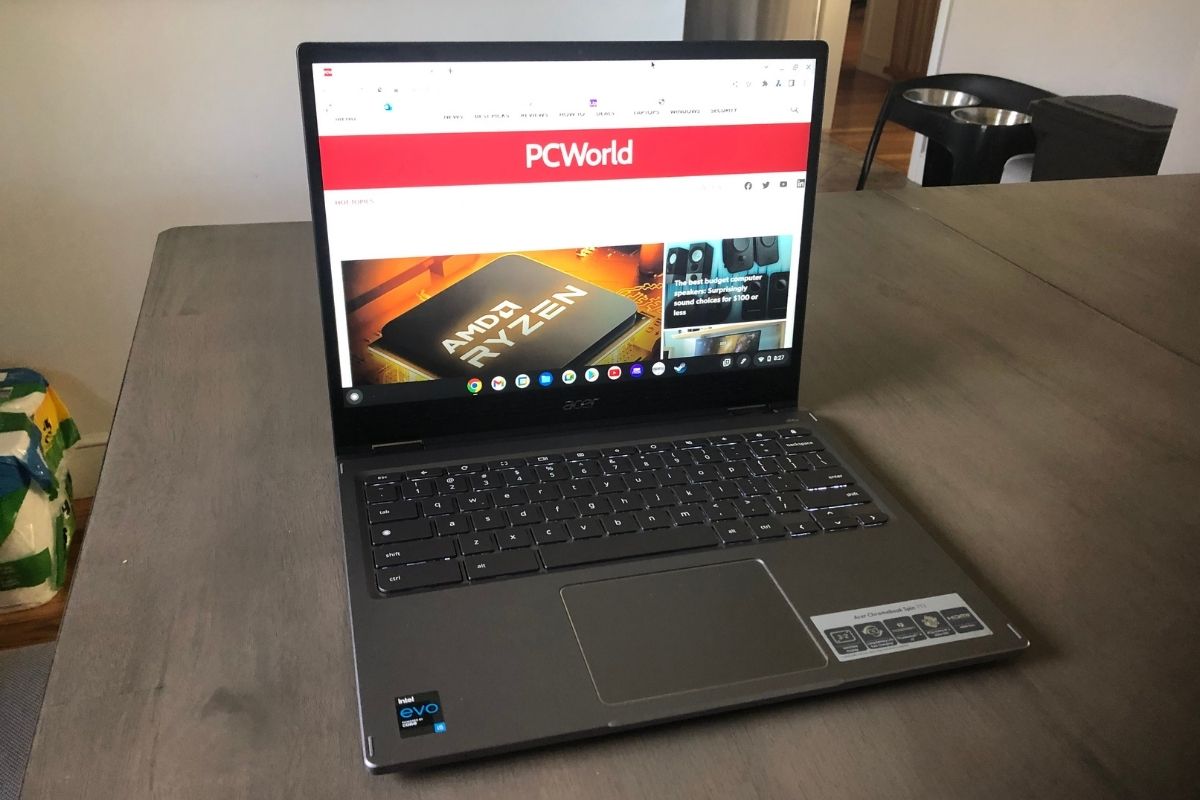
Pros
- Strong performance
- Good build quality
- Nice selection of ports
- Beautiful display
- Solid battery life
Cons
- No privacy shutter on the webcam
- Boring design
- Fan noise is a bit loud
The Acer Chromebook Spin 713 is a good option for the budget-conscious. This machine impressed us with its reasonable price point, vivid display, all-day battery life, and wide array of ports. It’s rocking an Intel Core i5-1135G7 CPU, Intel Iris Xe graphics, 8GB of RAM, and 256GB of PCIe SSD storage. It’s fast enough for general use tasks like checking e-email, browsing the web, watching Netflix, and so on. The build is also fairly robust, as the tester didn’t notice much flex in the keyboard tray. While the design is a little boring and fan noise can be a bit loud, the pros definitely outweigh the cons. It’s a solid convertible laptop that’s affordable and performs well. You can’t ask for much more than that.
Lenovo Yoga 9i 14 (2022) – Best display
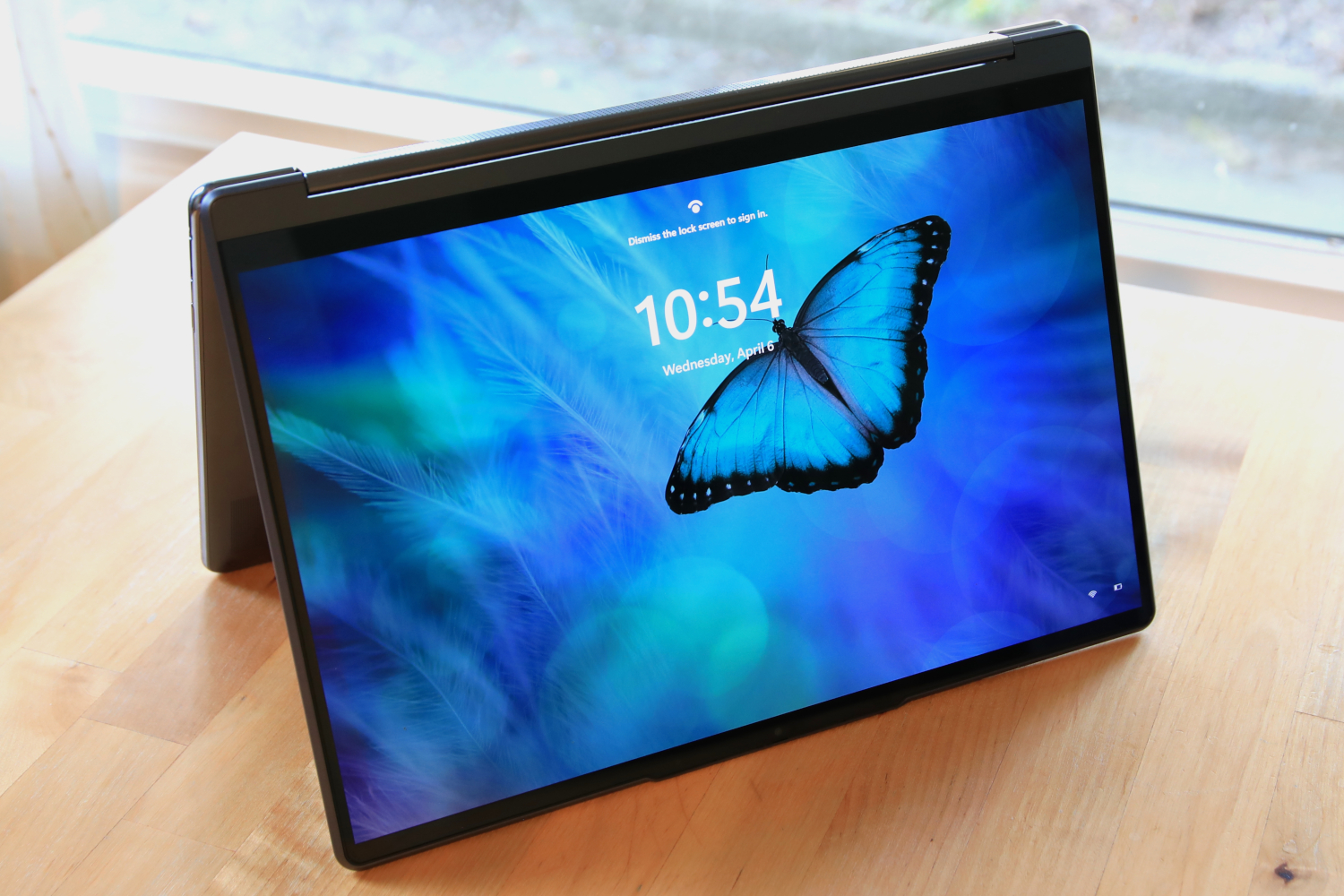
Pros
- Thin, attractive design
- Supports USB-C 4 with all the extras
- Vivid, rich OLED display
- Excellent sound quality
- Fast, especially for its size
Cons
- Relies heavily on USB-C
- Fan noise can be annoying
MSRP:
$1,230 (entry level) | $1,449 (as reviewed)
If you’re looking for a 2-in-1 laptop with an awesome screen, the Lenovo Yoga 9i is well worth considering. The 14-inch OLED display has a resolution of 3840×2400, an aspect ratio of 16:10, and is touch-enabled. According to our tester, the “text clarity is excellent” and a “wide color gamut spanning up to 99% of DCI-P3.” In other words, it’s a phenomenal screen for creative work. As for the internal components, the Intel Core i7-1260P processor “packs four performance cores and eight efficiency cores.” It should be able to chew through any resource-heavy tasks. This 2-in-1 also has Intel Iris Xe graphics, 16GB of RAM, and 1TB of SSD storage. There’s even a 1080p webcam, which is nice because most laptop webcams top out at 720p.
Read our full
Lenovo Yoga 9i 14 (2022)review
Samsung Galaxy Book2 Pro 360 – Best battery life
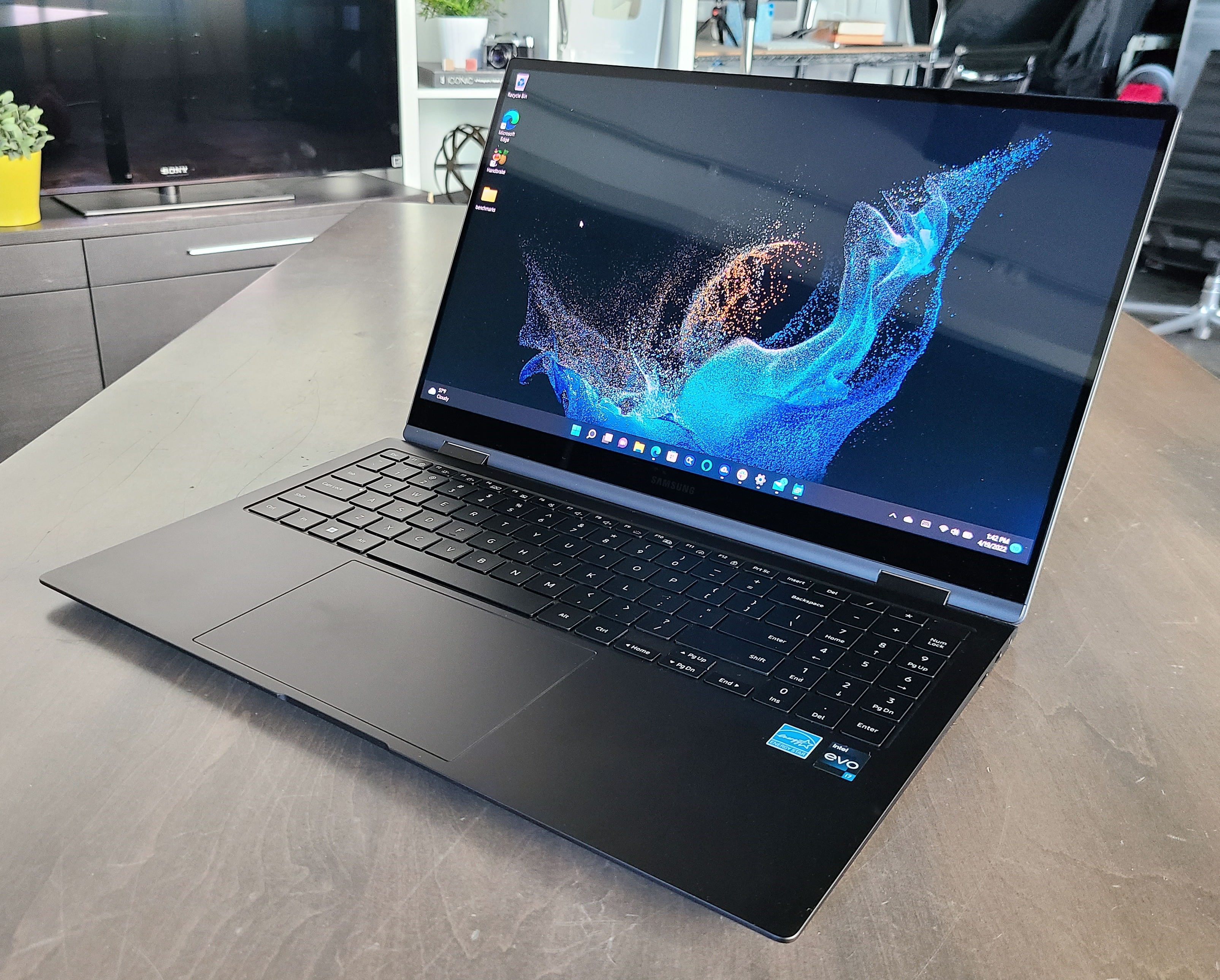
Pros
- Large, high-contrast OLED screen
- Fantastic battery life
- Top-notch 12th-gen Core performance
Cons
- Average keyboard
- Webcam doesn’t quite deliver as expected
- Fingerprint reader needed re-authentication
- Tons of additional apps
Need a 2-in-1 laptop that’ll keep on going and going? Look no further than the Samsung Galaxy Book2 Pro 360. When we ran our battery benchmark, which cycles through a series of tasks and videos until the laptop dies, the Pro 360 lasted 14 hours on a single charge. That’s more than a full work day, that’s for sure. It also weighs a little over three pounds, which is pretty lightweight given the 67 watt-hour battery inside. Under the hood, you’ll find an Intel Core i7-1260P CPU, Intel Iris Xe graphics, 16GB of RAM, and 1TB of SSD storage. That’s powerful enough for multitasking, media editing, and so on. The 15.6-inch AMOLED display has a resolution of 1920×1080. According to our tester, the AMOLED panel really “improves the contrast ratio” by deepening the blacks. For ports, you’re getting three USB Type-C, one microSD, and one 3.5mm audio jack.
Read our full
Samsung Galaxy Book2 Pro 360review
Surface Pro 8 – Best detachable
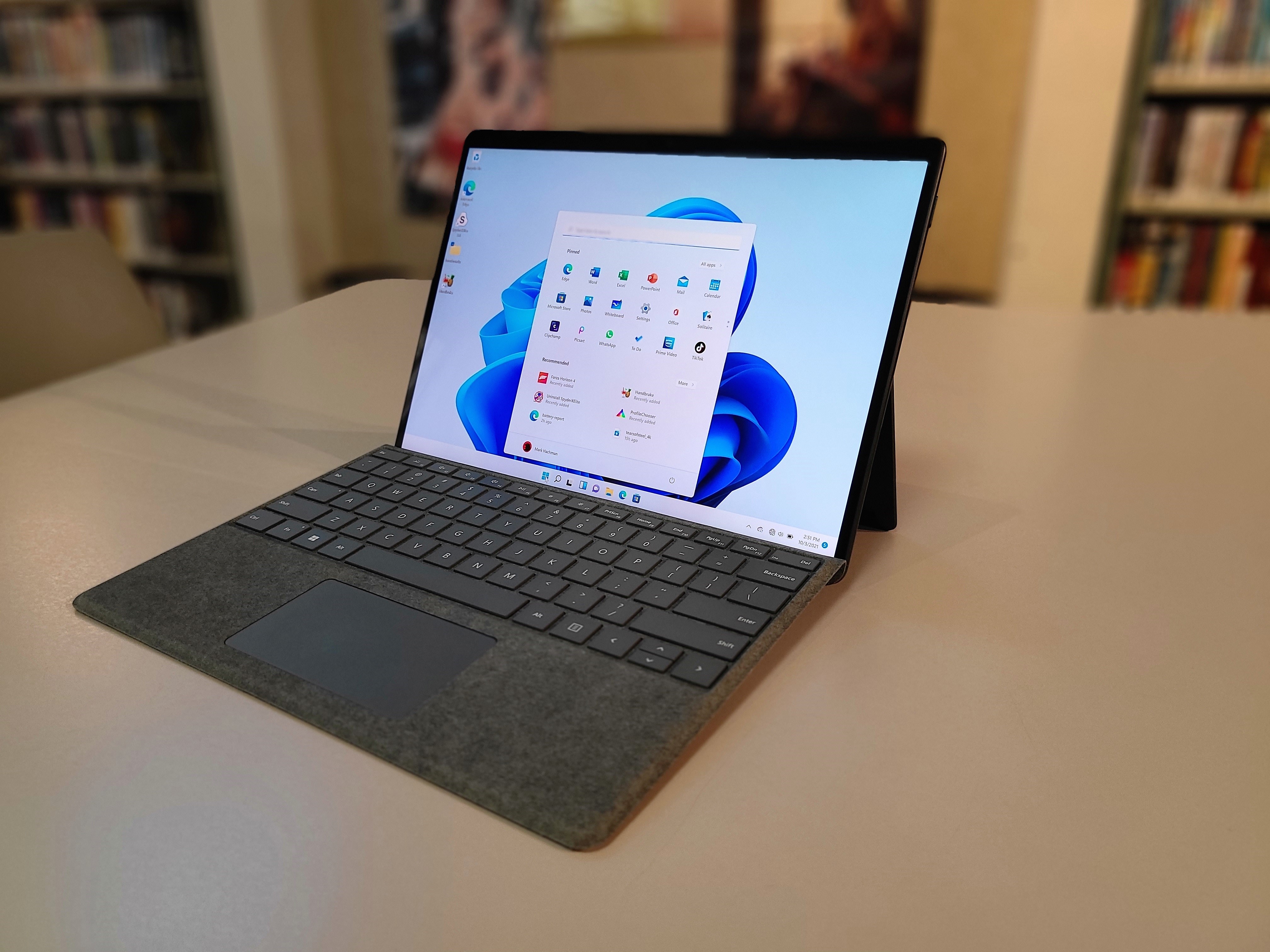
Pros
- Superior screen: larger, higher-res, higher refresh rate
- Inking is a pleasure
- Good audio, with louder speakers
- New optional Type Cover integrates pen well
Cons
- Webcam might need some tweaking
- Pen and keyboard still cost extra
- Still pricey
Microsoft’s Surface 8 is an excellent pick for students or business professionals. This device is truly featherlight, as it weighs a little under two pounds. It’s a detachable 2-in-1, which means you can remove the keyboard from the tablet. Fortunately, Microsoft’s Signature Keyboard “provides a lightweight, comfortable typing experience.” That’s not always the case with detachable 2-in-1’s. That said, the keyboard and pen are additional purchases. The extra cost is a buzzkill, that’s for sure. However, it’s not all that surprising. Let’s take a quick peek under the hood, shall we?
The Surface 8 features an Intel Core i7-1185G7 CPU, Iris Xe graphics, 16GB of RAM, and 256GB of removable SSD storage. That’s powerful enough to handle productivity and general use tasks. For ports, it has two USB-C, one Surface Connect port, one Surface Type Cover port, and one 3.5mm jack. The 13-inch PixelSense Flow display is rather spacious when compared to previous iterations and has a resolution of 2880×1920, making for a rather bright and vivid picture.
This is an awesome value, especially given the gorgeous screen and competitive price.
Read our full
Surface Pro 8review
How we tested
The PCWorld team puts each and every Windows laptop through a series of benchmarks that test processing and graphics performance, battery life, and so on. Basically, here at PCWorld we push the laptop to its limits and then compare it against similar machines we’ve tested. Chromebooks, on the other hand, go through a series of web-based tests due to the fact that they’re Chrome OS-based machines. Below, you’ll find a straightforward breakdown of each test and the reasons why we run them.
Windows laptops
- PCMark 10: PCMark 10 is how we determine how well the laptop handles lighter tasks like web browsing, word processing, spreadsheets, and so on.
- HandBrake: HandBrake is more intensive than PCMark 10. It basically measures how long a laptop’s CPU takes to encode a beefy 30GB file.
- Cinebench: Cinebench is a brief stress test of the CPU cores. It does this by rendering a 2D scene over a short period of time.
- 3DMark: 3DMark checks if 3D performance remains consistent over time by running graphic-intensive clips.
- Video rundown test: To gauge battery life, we loop a 4K video using Windows 10’s Movies & TV app until the laptop dies.
Chromebooks
- CrXPRT 2: The CrXPRT 2 benchmark tests a Chromebook’s battery life.
- Speedometer 2.0: This test determines a Chromebook’s web browser performance. It simulates this by adding, completing, and removing a to-do list.
- Basemark Web 3.0: This benchmark gauges how well a Chromebook can handle web-based applications.
- Kraken 1.1: Kraken 1.1 is a JavaScript performance benchmark.
- Jetstream 2: Jetstream 2 is a combination of WebAssembly and JavaScript benchmarks. This is a way to gauge how well a Chromebook runs advanced workloads.
2-in-1 laptops Q&A
2-in-1 laptops are great devices for remote workers, creative professionals, and students. It combines the portability of a tablet with the functionality of a traditional clamshell. You can flip it around and use it like a tablet or prop it up like a painter’s easel for sharing information. If you’re not sure if a 2-in-1 is right for you, don’t sweat it. In the section below, we’ll go over a couple of key points like specifications and battery life.
Why should I chose a 2-in-1 over a traditional clamshell?
If portability is at the top of your priority list, then you may want to consider a 2-in-1 laptop, as they’re generally compact and lightweight. They also tend to have excellent battery life due to the power-efficient components inside. 2-in-1 laptops often have 360-degree hinges, which allows you to swing the screen all the way around. This hinge allows you to prop it up like a tent for watching movies. Other 2-in-1’s have detachable keyboards. This lets you ditch the keyboard and use the laptop like a handheld tablet.
How much power do I need?
We’d recommend a 12th-Gen Intel Core i5 processor, 8GB of RAM, and 512GB of SSD storage. That’s enough power for working on spreadsheets, media editing, and so on. Need more oomph? we’d suggest springing for an 12-Gen Intel Core i7 processor, 16GB of RAM, and 1TB of SSD storage. Most of the laptops on the list above have integrated graphics, which is fine for some casual gaming but not for anything hardcore. A laptop with a discrete graphics card is better for gaming, but it will be heavier and more bulky as a result.
What about battery life?
If you travel a lot for work, a laptop with good battery life is absolutely vital. A laptop that lasts anywhere from 10 to 12 hours on a single charge is a good baseline. Fortunately, 2-in-1’s are known for having phenomenal battery life, as they’re comprised of power-efficient parts.
Stay connected with us on social media platform for instant update click here to join our Twitter, & Facebook
We are now on Telegram. Click here to join our channel (@TechiUpdate) and stay updated with the latest Technology headlines.
For all the latest Technology News Click Here
For the latest news and updates, follow us on Google News.
